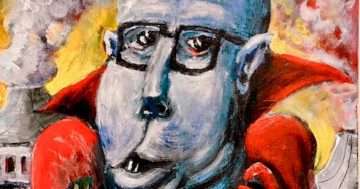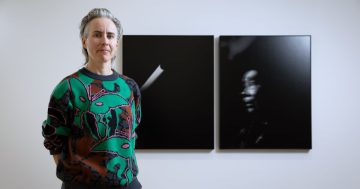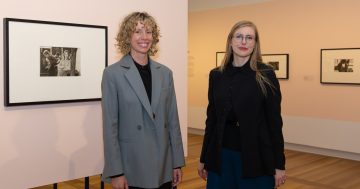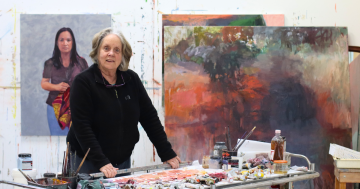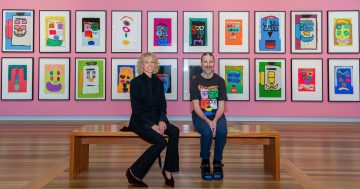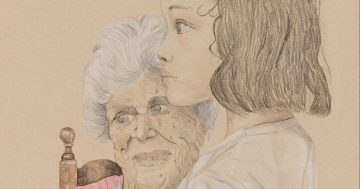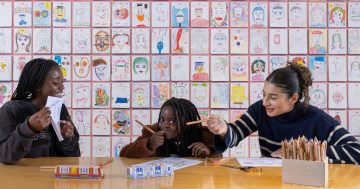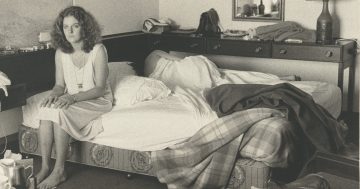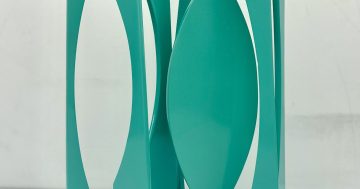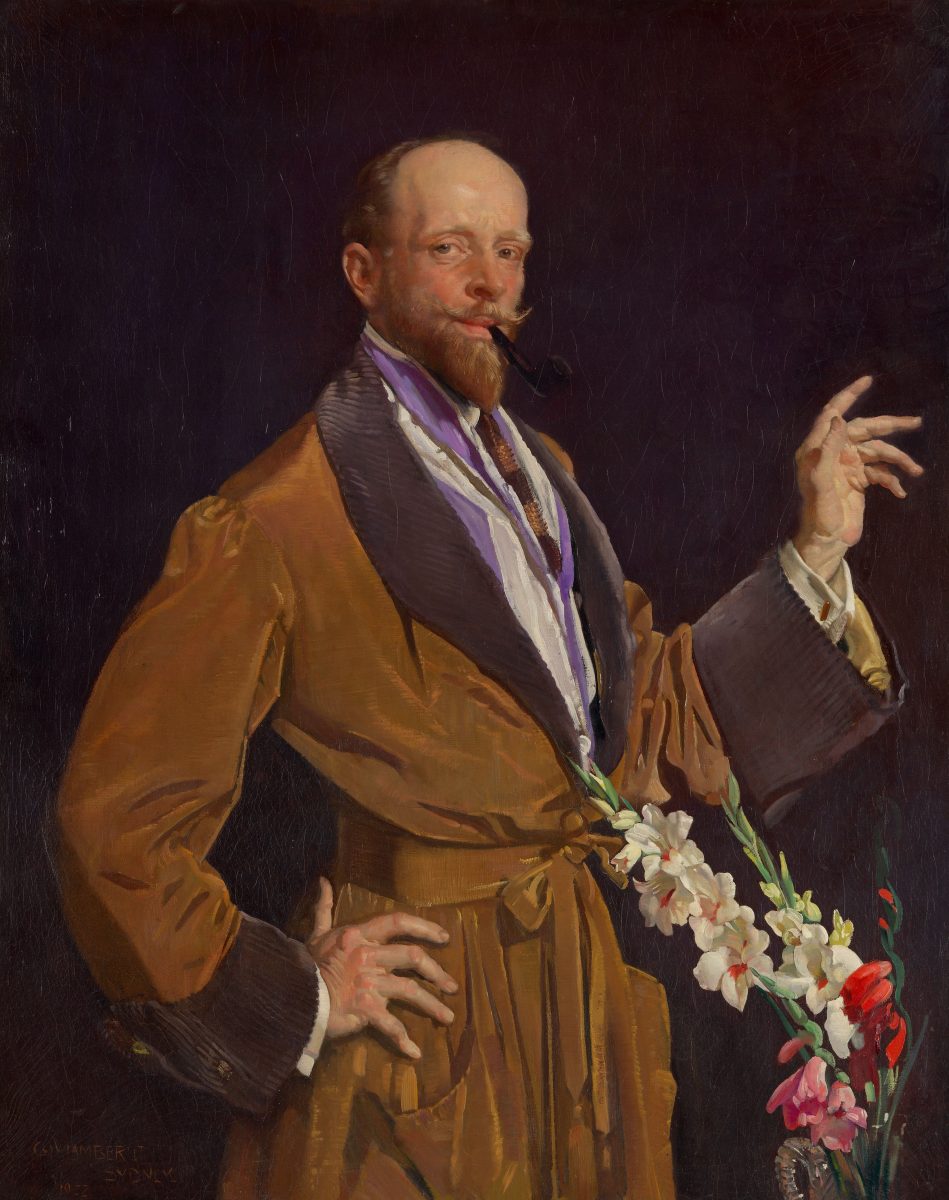
George Lambert’s Archibald Prize-winning 1922 portrait, Self-portrait with gladioli, part of the NPG collection `coming home’. Photo: National Portrait Gallery.
It’s Australasia’s most prestigious art prize for portraiture, so where better to mark the 100th birthday of the Archibald Prize than the nation’s home of the genre, the National Portrait Gallery (NPG) in Canberra.
Archie 100: A Century of the Archibald Prizes celebrates 100 years of the coveted award and features almost as many works in the exhibition.
To celebrate its centenary, the exhibition has been touring the country but will make the NPG its final destination next month, from October 20. It was first showcased at the Art Gallery of NSW in 2021 as part of that gallery’s 150th birthday celebrations.
Director of the NPG, Bree Pickering, said it was fitting the exhibition for the much loved and long-running portrait prize was to conclude at the NPG – “the home of Australian portraiture”.
“Every portrait has been carefully selected and researched by curator Natalie Wilson, and the exhibition presents significant examples of Australian portraiture,” Ms Pickering said.
“It is also a rich record of the characters, artists and people who have shaped our shared history over the past century.”
She said the NPG was also pleased to “welcome home” works from its own collection, including Nora Heysen’s work of Robert H. Black, MD and George Lambert’s Self-Portrait with gladioli which had been part of the tour.
Heysen was the first woman and youngest artist to win the Archibald. At age 28 she won for her portrait of the wife of a Dutch diplomat, Madame Elink Schuurman.
Curator of Australian art at the Art Gallery of NSW, Natalie Wilson, said the exhibition included portraits by artists from across Australia and Aotearoa New Zealand, and from every decade of the prize.
“Each portrait selected for Archie 100 offers an exciting glimpse into a specific moment in time,” she said. “Together, these works uncover changes in society in engaging ways, enabling people to experience how artistic styles and approaches to portraiture have changed over time.
“Visitors can expect to see and discover stories of renowned portraits of identities from the past century, magnificent portraits of intriguing characters whose names have today been forgotten, and works that have not been seen in public since first being exhibited in the Archibald Prize.”
The first Archibald Prize was awarded in 1921, following a bequest in the will of the editor of The Bulletin magazine, J.F. Archibald, who died in 1919. Archibald was a trustee of the Art Gallery of NSW from 1915 and in 1919, the gallery commissioned artist Florence Rodway to paint his portrait. Archibald’s bequest was designed to foster portraiture, support artists and perpetuate the memory of great Australians.
The open Archibald competition, judged by trustees of the Art Gallery of NSW, is awarded annually to the best portrait, “preferentially of some man or woman distinguished in arts, letters, science or politics, painted by any artist resident in Australasia”.
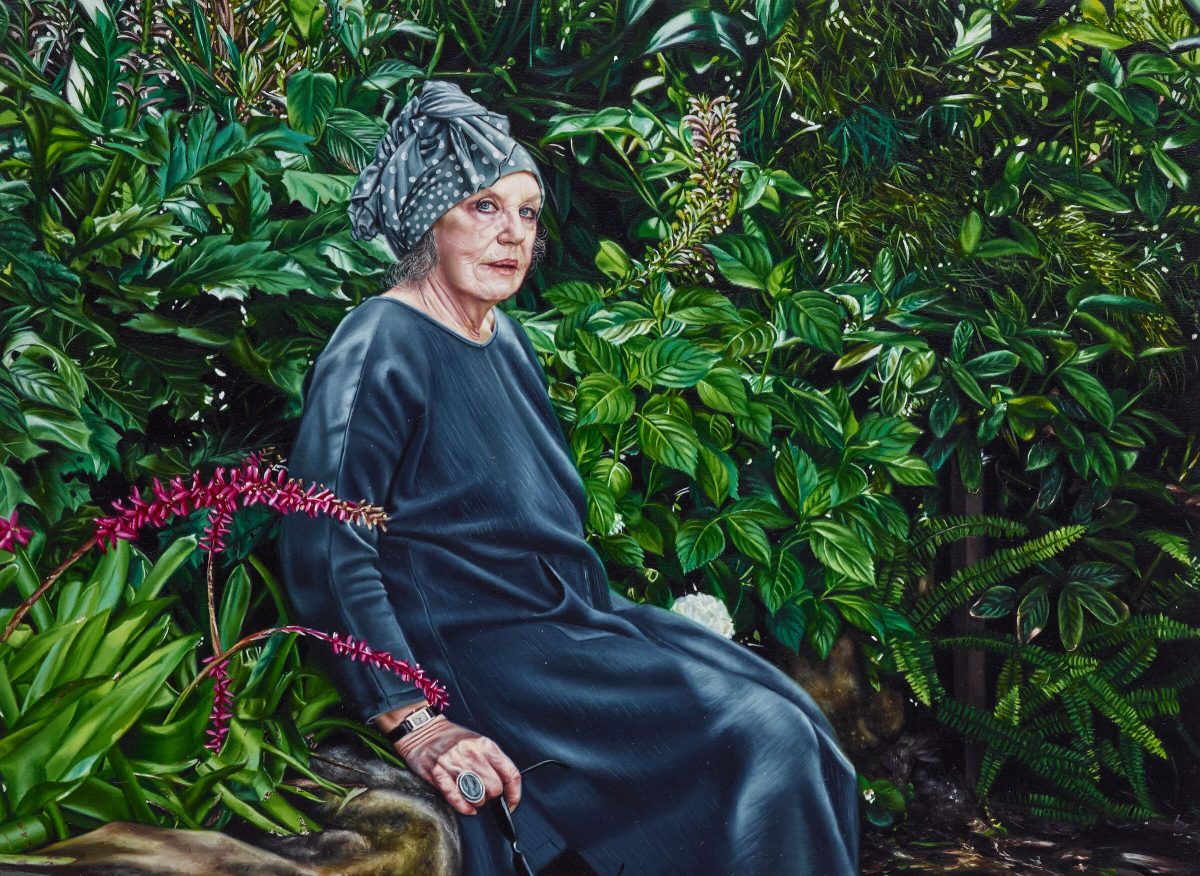
Artist Natasha Bieniek’s portrait of Wendy Whiteley won the 2016 Archibald Prize. Photo: National Portrait Gallery.
Resulting from many years of research into more than 6000 works that have been shown in the Archibald to date, and a national public appeal for help to locate lost portraits, Archie 100 features a selection of works from libraries, galleries and museums across Australia and New Zealand, and private Australian and international collections.
Arranged thematically, Archie 100 delves into the colourful history of the prize and honours the artists who have made the Archibald one of the most sought-after accolades in Australasian art today.
But it has not been without its controversies over the years – in 1964 and 1980, trustees declined to award a prize, saying no entry was considered worthy.
In 1996, Wendy Sharpe made history as the first woman to win the Archibald with her self-portrait and this year, for the first time, more works by women (30) than men (27) were named as finalists.
Archie 100: A Century of the Archibald Prize opens at the NPG on 20 October and runs until 28 January 2024. Bookings open soon.
Original Article published by Sally Hopman on Riotact.


